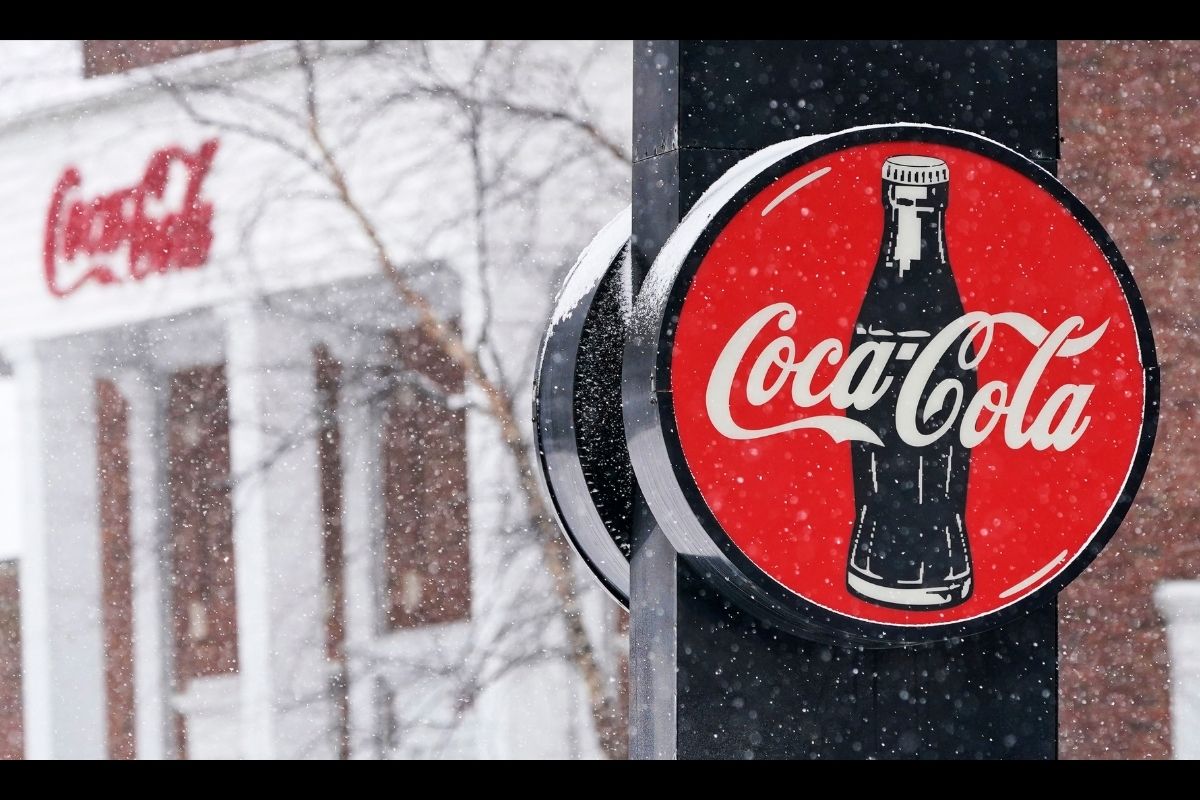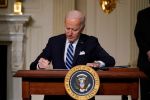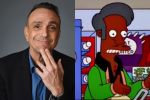Something about mass commercial soda companies confronting racism always leads to social media snafu. First, there was the infamously cringey Kendall Jenner Pepsi commercial in 2017 which has aged even worse than critics imagined. (Watch below.) And now the Coca-Cola Company is in hot water over their diversity training which reportedly urged workers to “be less white.”
Videos by Rare
Frankly, there are critics on both sides of the debate. While actions by Pepsi were not radical enough (or at all), the recent step by Coke is being decried as “reverse racism.” The question then becomes one that’s nearly impossible to answer under capitalism. To what degree can a company outwardly profess progressive ideals while maintaining an order that continuously overlooks both consumers and workers of color? In 2021, campaigns — both commercial and political — rely on perceived authenticity. And that’s just one reason why the move by Coca-Cola has drawn especially sharp criticism.
The Bizarre Kendall Jenner Pepsi Ad
Coca-Cola’s Diversity Training Program
🚨🚨🚨 BREAKING: Coca-Cola is forcing employees to complete online training telling them to "try to be less white."
These images are from an internal whistleblower: pic.twitter.com/gRi4N20esZ
— Karlyn Borysenko, Tower Event Creator 🇺🇦 (@DrKarlynB) February 19, 2021
Screenshots from Coca-Cola’s new diversity training program were leaked on Twitter by Karlyn Borysenko, a self-described “Former Democrat” and “Unwoke activist” — whatever that means. On February 19, she posted images from Coke’s online “Confronting Racism” training program, reportedly shared by an “internal whistleblower.”
As the screenshots show, the training included slides entitled, “Understanding What it Means to Be White, Challenging What it Means to Be Racist.” As a response to that challenge, the program encourages workers “to be less white,” accompanied by a list of seven reasons how.
“To be less white is to:
-be less oppressive
-be less arrogant
-be less certain
-be less defensive
-be less arrogant
-be less ignorant
-be more humble
-listen
-believe
-break with apathy
-break with white solidarity”
The ultimate conclusion, written in bold on its own slide, was clear: “Try to be less white.”
Predictably, it did not take long for an angry online mob to grow, accusing the company of “reverse racism.” One such commenter, employment lawyer, and GOP official Harmeet K. Dhillon, re-tweeted the post and calling it “blatant racial discrimination.”
In response, a Coca-Cola spokesperson released a (fairly lukewarm) statement that did not deny that the training took place, but insisted that its message “is not a focus of our company’s curriculum.” Coca-Cola also denied that Karlyn Borysenko would have received the screenshots from an “internal whistleblower,” as the training seminar was publicly accessible on LinkedIn Learning. (However, the link provided by Coca-Cola has since been taken down. Newsweek reported that LinkedIn removed the course on February 22, following the backlash.)
Read Coca-Cola’s Response In Full
Statement from @CocaCola: https://t.co/Jzur7zuXFz pic.twitter.com/DBIpsj5706
— Chris Pandolfo (@ChrisCPandolfo) February 20, 2021
Necessary Background on the Online Training
The “Confronting Racism” learning curriculum, adopted by the Coca-Cola Company, was written by White Fragility author, sociologist Robin DiAngelo. White Fragility: Why It’s So Hard for White People to Talk About Racism was published in 2018 and remained on the New York Times Bestseller List for more than a year. DiAngelo, who is white, spent more than 20 years working in corporate diversity training. She wrote White Fragility for a white audience after reflecting on the hostility she witnessed from white people during racial diversity training.
Both White Fragility and the “Confronting Racism” learning program draw on the concepts of Critical Race Theory, an American sociological framework developed during the 1980s. Critical Race Theory derives from two underlying themes:
1. White supremacy exists.
2. Transforming the harmful relationship between law and racial power, currently rooted in white supremacy, is possible.
Turning concepts of Critical Race Theory into part of a learning plan for corporate entities might, ideally, lead to a more inclusive workplace. After all, in the wake of every new controversy regarding racism at the professional level, the official outcome is usually the same: more diversity training. It’s one of the few concrete measures we have to tackle discriminatory bias. So why not try overhauling the process? In an experimental move, Coca-Cola — wittingly or not — included aspects of Critical Race Theory as part of the company’s evolving movement.
However, this is not the first time Robin DiAngelo’s work has faced criticism. As the Twitter mob accused the new training of being racist against white people, many academic experts have previously complained that DiAngelo’s writings assume a certain level of class privilege. The arguments might sound quite different — one from the left and one from the right — but get at a similar point: white people are not a monolith. As such, DiAngelo’s arguments are most helpfully aimed at “the well-educated liberal elite” while her opinions on a mass “white voice” and “white experience” are not necessarily as effective when applied to the real working world.
For example, in the case of the Coca-Cola company, it looks like racist actions have historically been perpetrated at the top of the corporate ladder. Rather than, ostensibly, by factory workers completing the charged diversity training.
Coca-Cola’s Racist History
Grace Elizabeth Hale’s 2018 New York Times op-ed, “When Jim Crow Drank Coke” outlines the historic — and troubling — link between Coca-Cola and the African-American community. Coca-Cola was invented in 1886 by pharmacist John Pemberton. It was famously infused with cocaine, and skirted around various prohibition laws. The drink became a refreshing — and stimulating — favorite among wealthy and middle-class whites who could casually enjoy the beverage at local soda fountains. Then In 1899, Coke invented the glass soda bottle, immediately de-segregating access to the pop. But as black people began to purchase and enjoy the drug-infused soft drink, the white community suddenly worried that it would lead to a rise in cocaine usage among African-Americans. A mass hysteria broke out.
As time went on, the cocaine was ultimately removed from the product. Coke then stepped up to create new ad campaigns that would prolong the popularity of the product. Despite the widespread demand for Coke in both white and black areas, Coke focused advertisements solely on white consumers. Their competitor, Pepsi, was more than happy to fill that gap, hiring a black marketing team, and even Duke Ellington as a spokesman. This went on until Pepsi eventually abandoned the cause, fretting over losing the favor of whites. That’s when Coke, finally, recognized the commercial viability of the black market and began fostering an ongoing relationship with the N.A.A.C.P. That partnership was called into question in 1999.
In 1999, a lawsuit filed by black Coke employees accused Coca-Cola of “erecting a corporate hierarchy in which black employees were clustered at the bottom of the pay scale,” according to NewsOne. They averaged $26,000 less per year less than their white co-workers. In November 2000, came the largest discrimination settlement to date: $192 million. $156 million to the employees, plus a $50 million donation to the Coca-Cola Foundation for community programs. In addition to the massive payout, this settlement required the implementation of changes in how the “company manages, promotes and treats black employees.” But the issues did not end there.
In 2012, sixteen black and Hispanic Coke employees sued claiming they were forced to work under “racially discriminatory” conditions constituting a “hostile environment.” One worker said she was openly ridiculed as a “nappy head and Aunt JaMamma” with no disciplinary action being taken against her verbal abuser.
After such a history of such discriminatory practices, it’s no wonder that Coca-Cola sought to update its image through a contemporary and academically-rooted diversity training course. But since the company has yet to speak out in true defense of the new curriculum, the gesture feels empty and a looming space is left in this cultural conversation. One that’s happily dominated by “unwoke activists” like Karlyn Borysenko. Though I suspect Robin DiAngelo would have a succinct response to those posting in the fragile Twitter frenzy: “Be less white.”
Editor’s Note: This article was originally published Feb 23, 2021.



